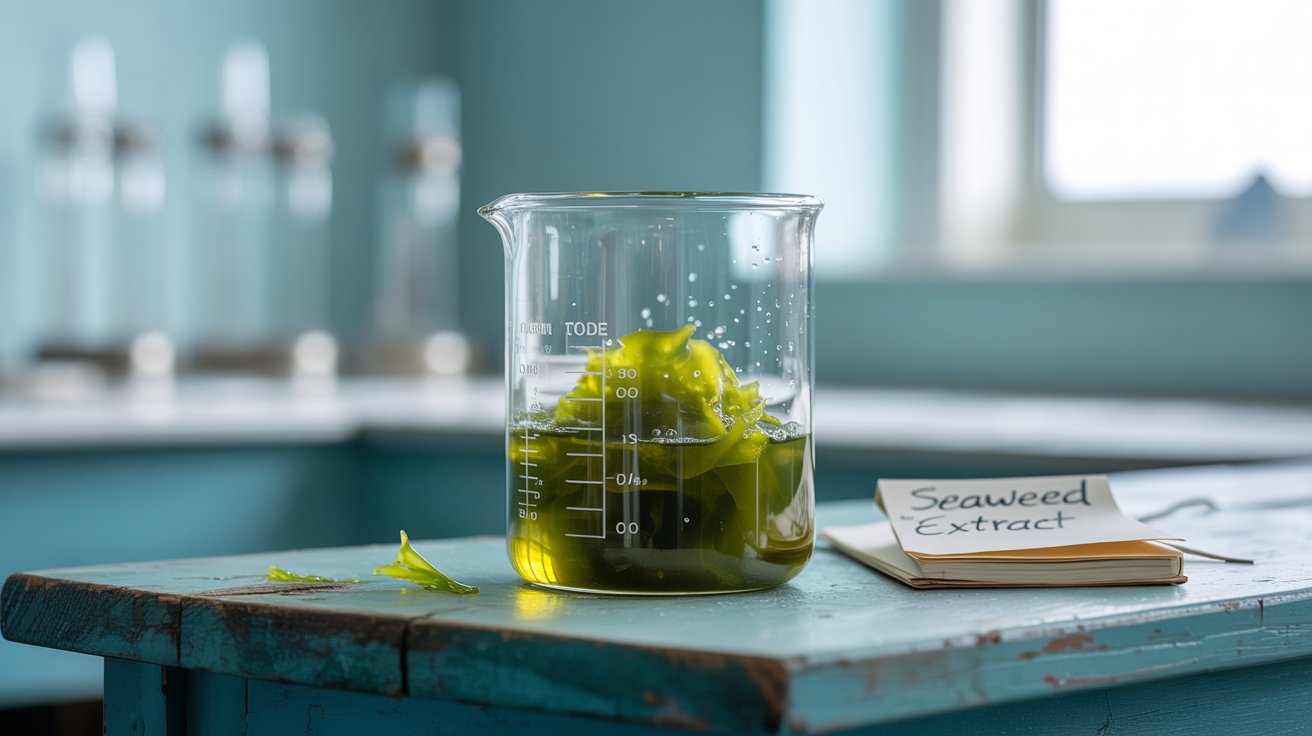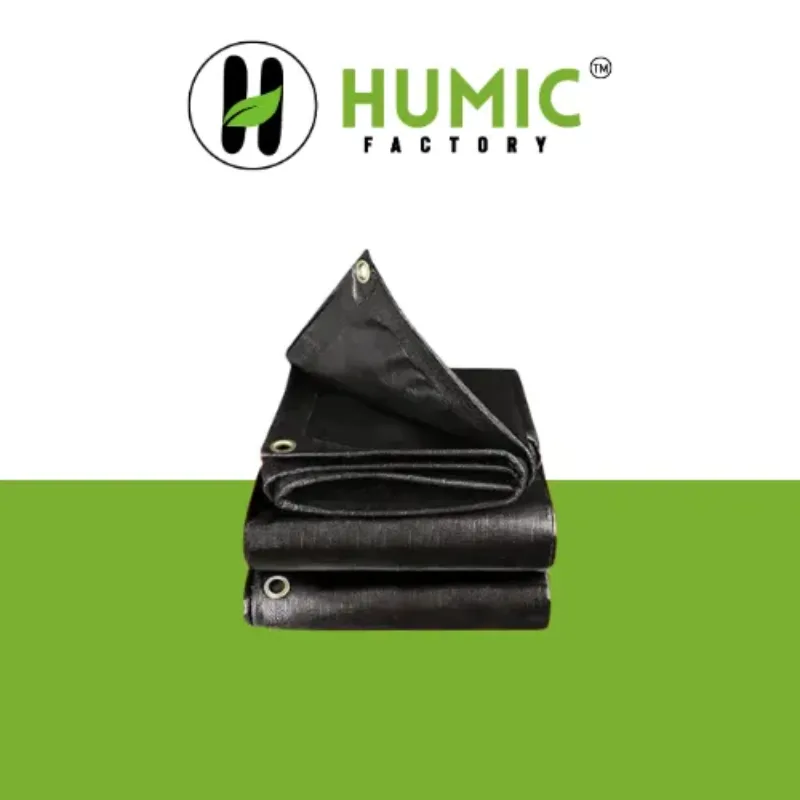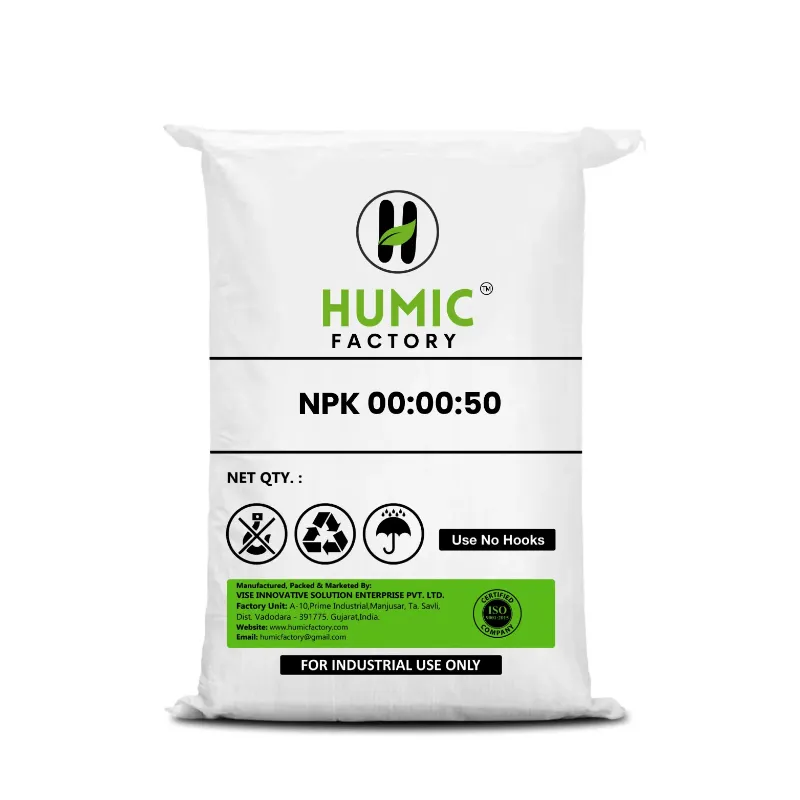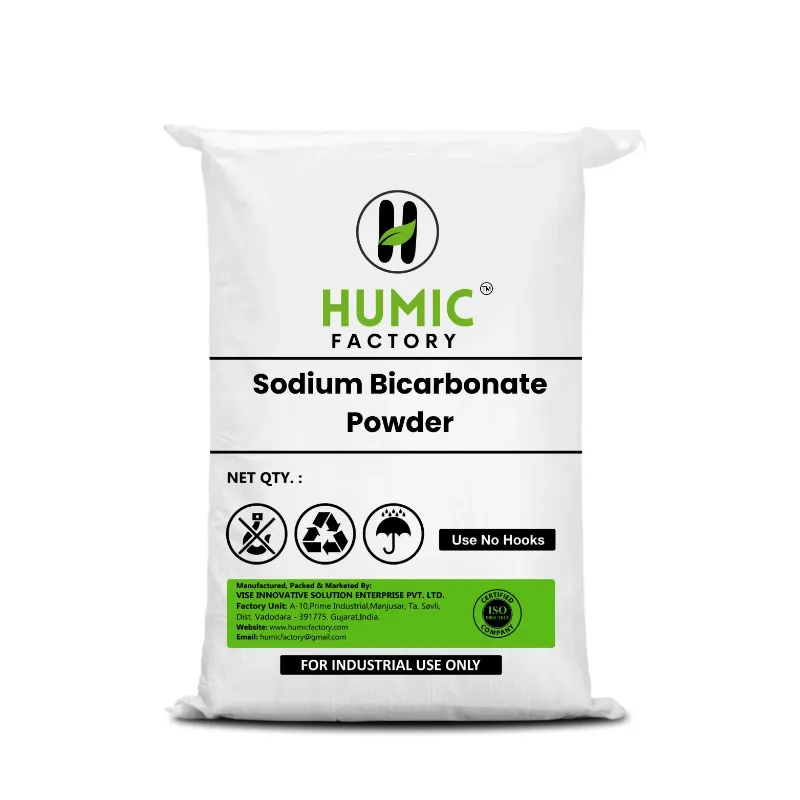Seaweed extract is a safe, organic solution obtained from marine algae that is popular for sustainable farming.
Seaweed extract is an incredible source of key nutrients found in plants including potassium, trace minerals, growth hormones, and natural enzymes and is known to build healthy roots, nutritious flowers, and promote healthy soil.
Seaweed extract is soft and non-toxic to the crops but strong working for farmers big and small.
So what is liquid seaweed used for? Many use it as a foliar spray or soil drench to increase resiliency of plants, potential nutrient uptake, and support overall growth.
Whether you are growing vegetables, grains or fruit, seaweed extract is a natural strengthener to integrate into your farming routine, drop by drop!
What is Seaweed Extract and Why It Matters in Agriculture
Seaweed extract, which is also known as a bio-stimulant, is produced naturally from marine algae. Seaweed extract has become a vital part of 21st century agriculture because of its powerful impact on soil health and plant growth.
Farmers worldwide use seaweed extract for its safety, lack of chemicals, and ability to improve yield and quality, making it a resourceful choice for sustainable and organic farming.
Definition and Origin of Seaweed Extract
A concentrated liquid or powder from marine algae (as harnessed from the marine ecosystem) that has abundant micro-nutrients and growth hormones (hormones responsible for plant growth).
These seaweeds were harvested from ocean water- including brown, red, and kelp- and harvested and processed through hot or cold extraction methods to maintain the composition of natural growth hormones, trace minerals, and bio-active compounds.
The end product is a bio-stimulant plant tonic to support growth, plant immunity, and improve soil structure.
What is Liquid Seaweed Used For in Organic Farming?
Liquid seaweed is usually applied either by way of a spray or poured directly into the soil.
It acts as a natural growth promoter of sorts; stimulating root growth, enhancing flowering, and helping them cope with stressors such as droughts or pests. It is also valuable for seed treatment - improving germination and seedling vigor for the young plant that is emerging. Perfect for use in organic farming, as it lessens the amount of synthetic fertilizers and pesticides required in crop production.
Types of Seaweed Used to Make Extracts (Kelp, Brown Algae, etc.)
Different types of seaweed have slightly different uses and benefits. The most commonly types of seaweed found in seaweed extract for plants includes:
- Kelp (Ascophyllum nodosum): This brown seaweed is known for being rich in plant growth hormones (cytokinins and auxins), and micronutrients.
- Laminaria digitata: This particular algae contains alginates, whose applications also allow for improved soil structure and retention of moisture in the soil and the algae.
- Sargassum & Fucus species: These brown algae have been found to increase plant immunity to pests or diseases, as well as improving the plants ability to handle stress.
- Red and green algae (Ulva, Chondrus, etc.): These algae are often used in combination for their broad mix of nutrients.
These seaweed extracts can serve as a source of natural and organic nutrients, are incredibly useful for crop production.
Benefits of Seaweed Extract for Plants
Seaweed extracts are a natural growth enhancer that farmers have been using for decades. Seaweed extract is a marine-based tonic that can be used to spray on leaves or mixed into the soil and used to stimulate plant development at every stage.
Whether it is helping to form a stronger root system, or improving the fertility and biology of soil, seaweed extract for plants will stimulate and promote healthy crops without the negative aspects of chemical growth enhancers. That is why seaweed extracts are nice in both organic and conventional farming practices.
Stimulating Root Growth and Nutrient Absorption
One of the primary benefits of using a seaweed product is the ability to promote increased growth of deeper and more active root systems.
Seaweed extractions contain natural plant growth hormones which are known as auxins and cytokinins, which helps plants build additional lateral roots and root hairs.
With a more extensive root system plants are capable of getting more water and nutrients—feeling plants, especially key macro and micro-nutrients like potassium, magnesium, and iron—all of which can have a marked positive impact on plants in early stages of growth and, and similar advantages at the transplant phase.
Boosting Plant Immunity and Stress Tolerance
So what about a stress-dodging application of liquid seaweed extract to see if it works?
- It provides natural resistance build up in the plant.
- Seaweed extract has been shown to increase the amount of natural antioxidants and enzyme defenses the plant can create and provide plants resilience when they experience stress due to environmental conditions.
As you would expect the treated crops show a quicker recovery from impacts of diseases, improved drought-dodging wilting, and improved leaf health and flowering being apparent.
Improving Soil Fertility and Microbial Life
What else does seaweed extract provide to the soil? More than you think!
When applied to the soil, it feeds beneficial microbes to leverage organic matter decomposition and nutrient release.
It provides increased microbial life, improved soil function, and provides over-time soil fertility to enhance the land.
This leads to longer-term benefits with consistent higher yields and healthier plants that season after season are better able to withstand environmental stress.
Liquid Seaweed Extract: Applications in Modern Farming
Seaweed extract is more than a supplement—it's a holistic product that promotes plant health from seed through harvest.
What is liquid seaweed used for in farming? To create an environmental impact on root systems, flowering and resistance by using foliar spray, soil drench or seed treatment to apply it.
How to Apply Seaweed Extract: Spray, Drench, and Seed Treatment
Depending upon the state and type of crop, seaweed extract for plants can be applied three simple ways:
- Foliar Spray: Just dilute and spray on the leaves. Let the plant absorb nutrients directly through the stomata (the pores of the leaf). Foliar spraying is ideal to use for the vegetative and flowering stage.
- Soil Drench: Combine with irrigation water and drench it near the root zone of the plant. Soil drench is quite effective in promoting soil microbial activity as well as expanding roots.
- Seed Treatment: Place seeds in a diluted seaweed solution and allow to soak for 8-12 hours before sowing. Pre-soaking seeds in a seaweed solution facilitates faster germination and stronger seedlings.
Seaweed Extract for Plants: Suitable Crops and Dosage
From field crops to vegetables, seaweed extract is safe and effective for nearly all plants.
Apply every 10–15 days for best results depending on crop and weather.
Compatibility with Fertilizers, Pesticides, and Other Inputs
What is seaweed extract most utilized for in agriculture? Versatility.
It goes well with:
- Fertilizers (NPK, micronutrients)
- Organic fertilizers, and microbial bio-stimulants
- Pesticides, fungicides and insecticides
Safety tips for mixing:
- Always jar test the products for compatibility prior to tank mixing.
- keep away from strong acidic, or alkaline products.
- Shake the jug before using to activate the organic properties of seaweed extract.
By incorporating it into your regular farming activity, seaweed extract (for plants) is a cost-effective, environmentally safe, high-performing input in your entire crop program.
Sustainable Agriculture and Seaweed Extract
As agriculture shifts toward more sustainable practices, seaweed extract is quickly becoming a champion of sustainable farming.
Not only is it a wonderful crop input but it is also a natural input that is better for the planet including reducing our impact on marine ecosystems, chemical use, and makes modern farming more sustainable.
Environmental Impact and Benefits of Seaweed Farming
What is seaweed extract doing in addition to supporting crop growth? A lot more than we realize. Seaweed farming is arguably one of the most sustainable agriculture practices on Earth:
Seaweed extract is produced with minimal processing, leaving behind a low carbon footprint—making it ideal for climate-resilient agriculture.
Reducing Chemical Dependency Through Natural Solutions
In conventional farming, the widespread and overly aggressive application of chemical fertilizers and pesticides leads to land degradation and negative impacts on water quality.What does liquid seaweed do in this regard? It acts as a natural growth promoter and bio-stimulant, replacing or using less chemical-based NPK or hormone based-stimulants.
Routine use of seaweed extract allows farmers to see:
- Less reliance on synthetic fertilizers
- Reduced pest and disease outbreaks
- Improved crop health cycles and soil longevity
It is a small switch, but has a large impact on the environment.
Seaweed Extract as Part of Regenerative Agriculture
Seaweed extract for plants is an ideal complement to the concepts of regenerative agriculture, which emphasizes repairing and restoring soil health and enhancing ecosystem biodiversity. Here's how seaweed extract fits into a regenerative farming system:
- Enhances microbial activity in the soil to support healthy root zones
- Increases organic matter and soil carbon over time
- Improves plant resilience to climate stressors, pests, and disease
- Facilitates multidimensional cropping systems such as crop rotation and intercropping
Seaweed extract is much more than a farming input; it is a soil healer, plant protector, and aligns with the future direction of farming.
How to Choose the Right Seaweed Extract Product
With various forms and specifications available, it is essential to know how to choose the right oceanic extract for your crops if it is effective and true to the label. When shopping you need to compare; the form (liquid or powdered), organic certificate, origin, etc.
What to Check: Liquid vs. Powder, Source, and Certifications
You need to know what the product is and how the format of the product will affect your use and results before purchasing.
It is also a good idea to assess the source of the seaweed. Cold-water species, such as Ascophyllum nodosum, tend to be high in cytokinins and micronutrients.
You should always look for how the extract is processed (cold or hot). Verify if the processing is completed without losing the natural enzymes and hormones in the seaweed.
Organic Labels and Reputable Seaweed Extract Brands
What can liquid seaweed be used for in organic farming ? It is most commonly used as a bio-stimulant and plant tonic. So it is always wise to choose products that are certified and from a trusted source.
Make sure to look for the following certifications and claims:
- USDA Organic or India Organic
- OMRI Listed (organic input approval)
- FCO-Compliant (Fertilizer Control Order - India)
- Species clearly labelled with species listed and active ingredient percentage
- No chemical additives or synthetic boosters
Use well known brands that specialize in sustainably harvested seaweed with transparent supply chains.
Buying Tips for Farmers and Distributors
Regardless of whether you are a small scale producer or a distributor purchasing your liquid seaweed in bulk, here’s what to keep in mind:
Request the TDS (Technical Data Sheet) and MSDS (Material Safety Sheet) for specific details on your liquid seaweed extract and gathering company information in general.
- Look for links to trial application rates and data and compatibility with inputs currently being used.
- Ensure that rates are specified on the label, as well as crop-specific rates.
- If you are purchasing large volumes for numerous acres, consider repacking the product into larger bulk containers (5L, 20L) for cost efficiency.
- Look for a company that offers after-sale support for you and your customers (e.g., product knowledge, guarantee) and usage training.
FAQs
Q1. What is seaweed extract made from?
Seaweed extract is made from marine algae—mainly kelp and other seaweeds—processed to retain natural nutrients and growth hormones beneficial for plants.
Q2. What is liquid seaweed used for in farming?
Liquid seaweed extract is used as a foliar spray or soil drench to promote root growth, improve nutrient absorption, and boost crop health naturally.
Q3. Can I use seaweed extract for all types of crops?
Yes, seaweed extract for plants is safe and effective for vegetables, fruits, pulses, cereals, and even flowering plants.
Q4. Is seaweed extract safe for organic vegetable farming?
Absolutely. Most seaweed extract products are organic-friendly and widely used in certified organic farming.
Q5. How often should seaweed extract be applied to plants?
Apply every 10–15 days during active growth stages, depending on the crop and concentration of the seaweed extract product.
Conclusion: Embrace the Benefits of Seaweed Extract for Plants Today
In today’s world of evolving agriculture, farmers are shifting toward solutions that are both effective and environmentally responsible. That’s where seaweed extract for plants makes a real difference.
Derived from marine algae, what is seaweed extract if not nature’s gift to farming? It nourishes crops, strengthens soil, and does it all without harming the environment.
A Powerful Step Toward Eco-Friendly Farming (Graphic)
When you choose seaweed extract, you're choosing a cleaner, greener path.
It helps reduce the need for chemical inputs, improves crop resilience, and enhances soil health—all in a sustainable way.
What is liquid seaweed used for? It’s used to power up plants naturally, making them stronger from root to leaf without leaving harmful residues.
Boost Productivity While Caring for the Soil (Graphic)
With regular use, seaweed extract for plants not only improves your yield—it restores life to the soil.
It feeds beneficial microbes, improves nutrient flow, and helps your land thrive long term.
In short, seaweed extract isn’t just a supplement—it's a farming revolution in a bottle. Embrace it today, and sow the seeds of a better tomorrow.





